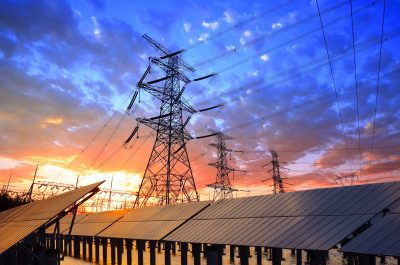UK calls to unlock network use of battery storage
The implications of the ‘Brexit’ vote for energy policy in the UK remain almost as unclear as its impact on the country’s political leadership.
Some predict impacts on affordability, security of supply, Paris commitments, renewables policy and solar imports. Others select ‘none of the above’.
Angus McNeil MP, Chair of the House of Commons Energy and Climate Change Select Committee described the implications for energy policy as an “open question”. The week before the ‘Brexit’ vote, the Committee released a landmark Low carbon network infrastructure report.
The report set out the need for energy networks, governments and regulators to work together to deliver aggressive carbon reduction targets in a period of significant technology change. It added to an increasing focus by international policy makers and regulators on the need for agile and flexible energy policy reforms. It’s a refreshing read for Australian audiences – particularly its analytical approach and willingness to question traditional assumptions.
The review has identified that UK energy networks will face three ‘interwoven’ challenges:
- New energy sources in electricity, gas, and district heating require timely connections to, and consequent reinforcement of, the grid.
- System operators must employ new tools to balance supply and demand given the variability in output of some of these sources – such as wind and solar electricity.
- Network efforts to meet these challenges must not be impeded by outdated and inflexible regulation and governance.[1]
Like Australia, the UK’s energy mix has been undergoing significant change over the past several years. UK energy networks are meeting levels of distributed solar connections they had not expected to encounter until 2030.[2] While wind and solar supplied about 10 per cent of the UK’s electricity demand in 2014, it had increased 400 per cent in absolute and relative terms since 2010 and will double again by the end of the decade.[3]
Like Australia, UK energy institutions and policymakers are debating the strategic role of networks, the implications of energy storage, and more active distribution system operations.
The Select Committee report suggests a more measured approach and an open mind about how to deliver the best outcomes for customers.
Storage – move fast and think outside of the box
The Committee is critical of the lack of urgency in policy reform to address potential barriers to increased use of energy storage. It identifies one of the key barriers to storage deployment as the potential for outdated regulatory policy to treat energy storage like generation and prevent its optimal use in energy networks. Instead, the report concludes the appropriate policy response should be to recognise the service features of the technology.
Australia has seen some similar calls for “short cuts” in the regulatory treatment of storage – such as regulatory bans on network businesses investing in storage; or proposing a reverse “onus of proof” for their use of this asset. It’s hard to reconcile after years of Australian regulatory reform intended to focus on the service not the asset; the customer outcome, not the inputs; and a formal COAG statement on best practice regulation that puts the “onus of proof” on proposals for regulatory intervention.
The UK Select Committee heard evidence dismissing proposals that storage be treated like generation as “an accident of history” and a “strange anachronism”.[4] It noted practical examples that defy this classification, such as over 14 million system boilers with hot water tanks in the UK, representing a huge source of flexibility, and effectively, energy storage.
The Committee found that storage technologies should be deployed at scale as soon as possible, a conclusion that has led US and European regulators to actively target and incentivise storage deployment within networks.[5] The report supports network utilisation of storage as aiding system balance, and providing storage operators with a revenue stream that encourages its development. Critically, the review found that allowing networks to operate and procure storage, especially in the short run, could also facilitate these benefits.[6] This position of permitting network ownership of storage was actively supported by the peak UK renewable energy body.[7]
Similar conclusions were made in the UK’s recent National Infrastructure Commission Report, which concluded that[8]:
“Network owners are only just starting to make use of these technologies, but there is now enormous potential to make storage technologies an integral part of our networks, rather than building more power stations just to meet peak demand, or laying expensive cables.”
“Network owners should be incentivised by Ofgem to use storage (and other sources of flexibility) to improve the capacity and resilience of their networks as part of a more actively managed system.”
The potential need for regulatory oversight was acknowledged by the Select Committee. Rather than seeking to remove networks as a potential competitor in energy storage markets, however, the review sensibly sought detailed analysis from both policy and regulatory agencies about the long-term risks of network ownership, operation and procurement in their work on storage.
Anticipatory investment and network reinforcement needs
The report also highlights the potential value of ‘anticipatory investment’, or strategic investments to meet future needs. The Committee supports early work by the regulator Ofgem to support anticipatory investment, such as that where networks reinforce the existing network in advance of expected connection requests.[9] This approach is currently being trialled in a handful of areas across Britain, and a variety of cost recovery models are being considered.
The report recognises that this type of strategic investment is likely to improve networks’ speed at connecting distributed generation. However, the Committee also recognises that there is a risk of creating stranded assets at bill-payers expense. It has recommended up-to-date modelling, and impact assessments to minimise this risk.[10] The report also points to the need to align future risk allocation and decision-makers’ incentives.
Evolution, not revolution, in new system operation models
A third set of issues examined by the review is the future of system operation at the energy transmission and electricity distribution level.
In a finding that echoes the New York Reforming the Energy Vision process, the Committee concluded that evidence currently favours the evolution of Distribution System Operators (DSOs) from Distribution Network Operators (DNOs).[11] The review also relied on evidence from Ofgem that noted the benefits of avoiding complications from the separation of this function.[12]
Recognising the need to protect competitive outcomes, however, the review recommends future examination of the governance of distribution networks as DSOs’ functions develop over coming years.
Flexible policy for a transforming sector
Finally, the report recognises rapid energy market transformation has implications beyond customers and networks, and impacts on the design and execution of government and regulatory policy processes. The review criticises the current UK government for having “disconnected policy ideas at varying stages of implementation”.[13]
There is value for the Australian reader in this report, as the COAG Energy Council prepares to meet for the first time since the Federal Election, with 11 active Council rule change applications and a series of governance reforms still to be implemented.
International studies like the UK Select Committee report suggest that market disruptions don’t discriminate. There will be just as many challenges for traditional regulation and policy as there will be for other participants in the new energy system.
[1] House of Commons, Energy and Climate Change Committee Low carbon network infrastructure: First report of session 2016-17, 17 June 2016
[2] p.3
[3] p.22
[4] p.25
[5] p.27
[6] p.27
[7] p.26
[8] National Infrastructure Commission (NIC), Smart Power, p.11
[9] p.47
[10] p.11
[11] p.49
[12] p.39
[13] p.45



